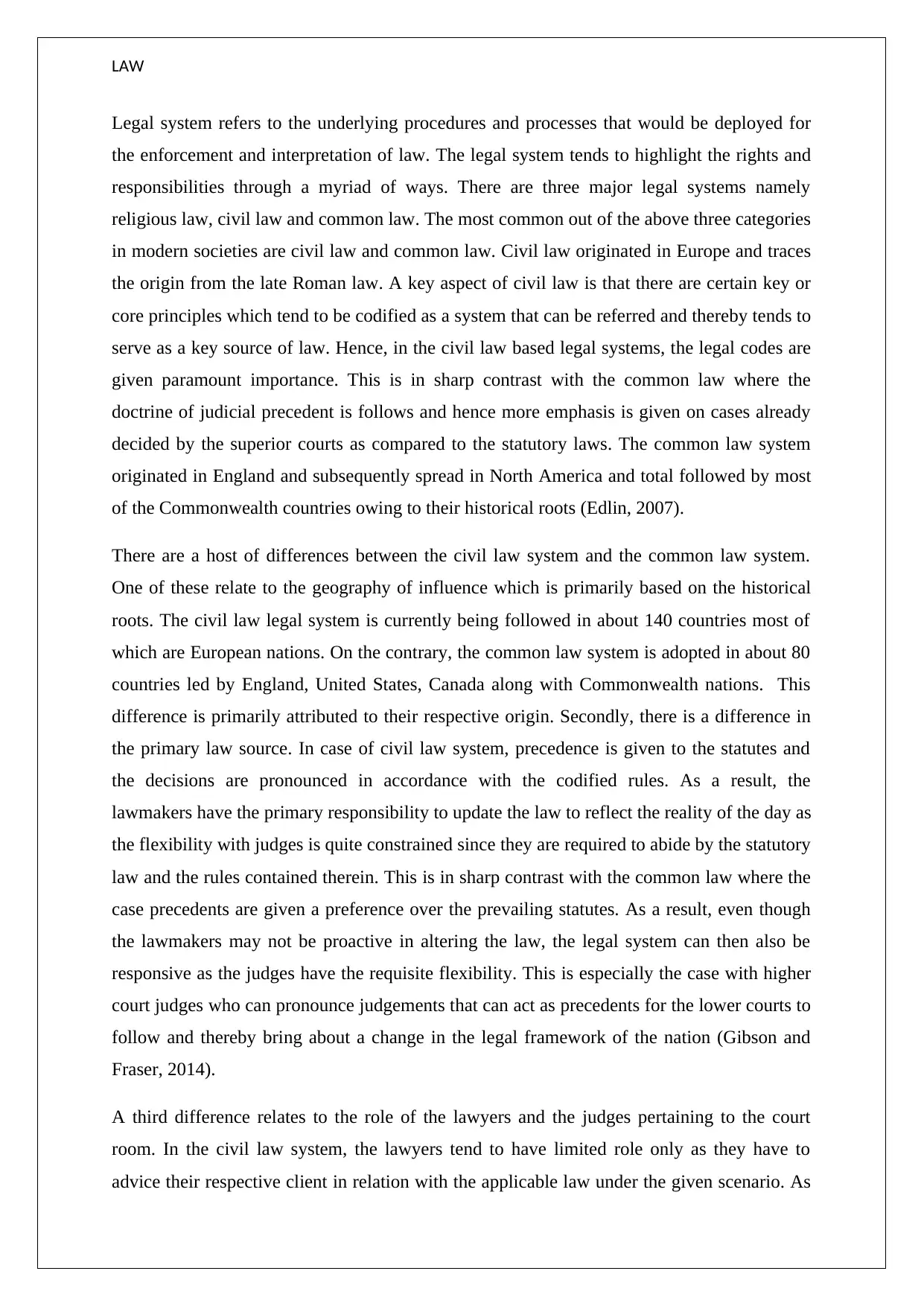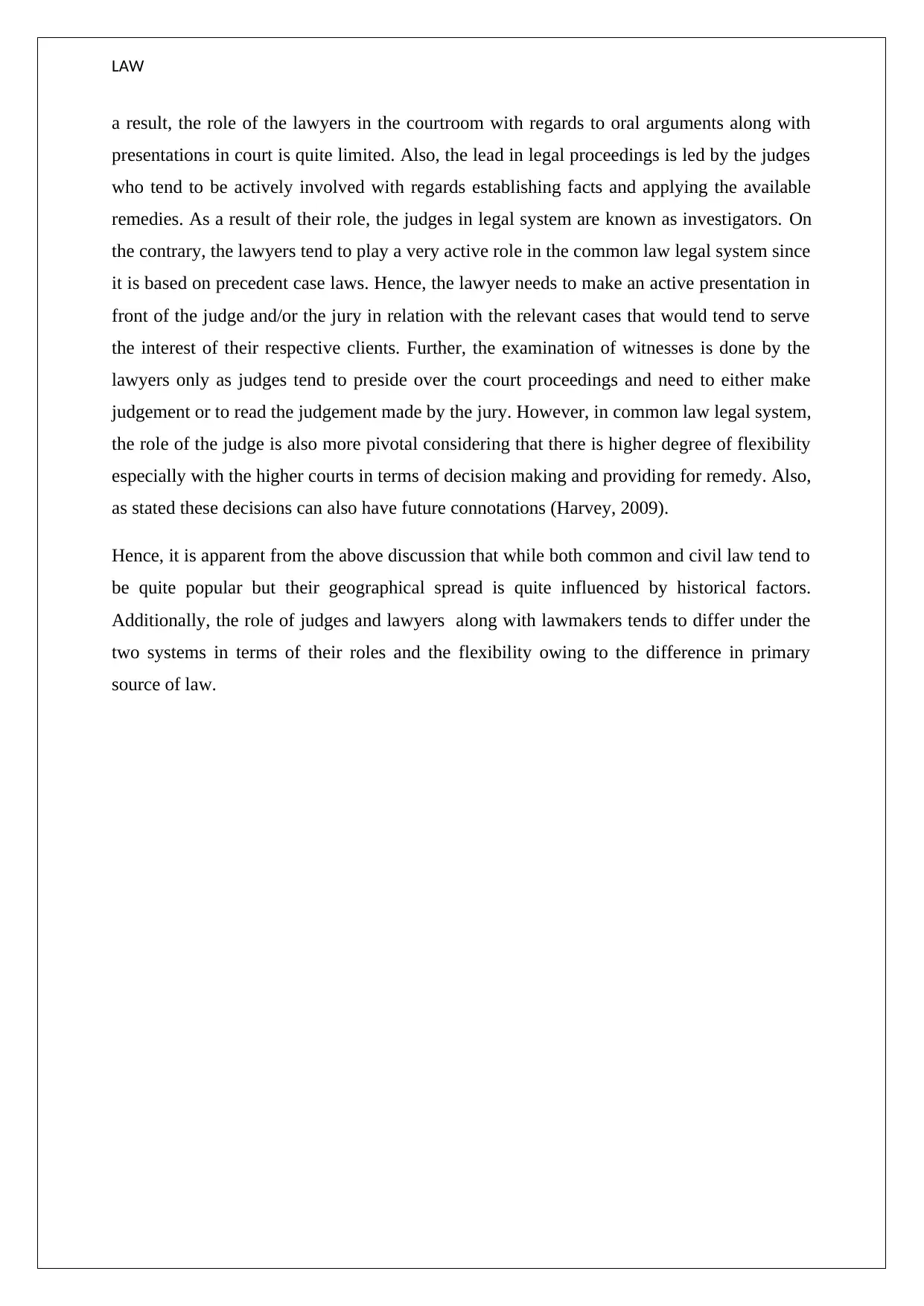An Analysis of Civil Law and Common Law Legal Frameworks
VerifiedAdded on 2020/04/15
|3
|903
|42
Essay
AI Summary
This essay provides a comprehensive comparison of civil and common law legal systems. It begins by defining both systems, highlighting their historical origins and geographical spread. The essay then delves into the key differences, including the primary sources of law (statutes versus judicial precedent), the roles of judges and lawyers in the courtroom, and the flexibility within each system. In civil law systems, statutes and codified rules are paramount, with lawyers having a more limited role and judges acting as investigators. Conversely, common law systems emphasize case precedents, giving lawyers a more active role in presenting arguments and examining witnesses, while judges have greater flexibility in shaping legal outcomes. The essay also references key literature and concludes by emphasizing the influence of historical factors on the adoption and evolution of both legal systems, as well as the impact of these differences on the roles of legal professionals and the overall responsiveness of the law to societal changes.
1 out of 3










![[object Object]](/_next/static/media/star-bottom.7253800d.svg)